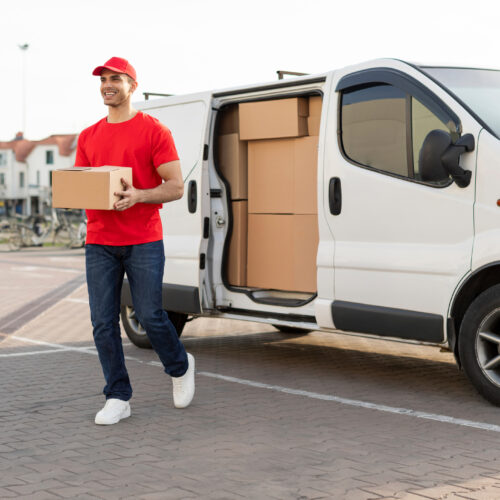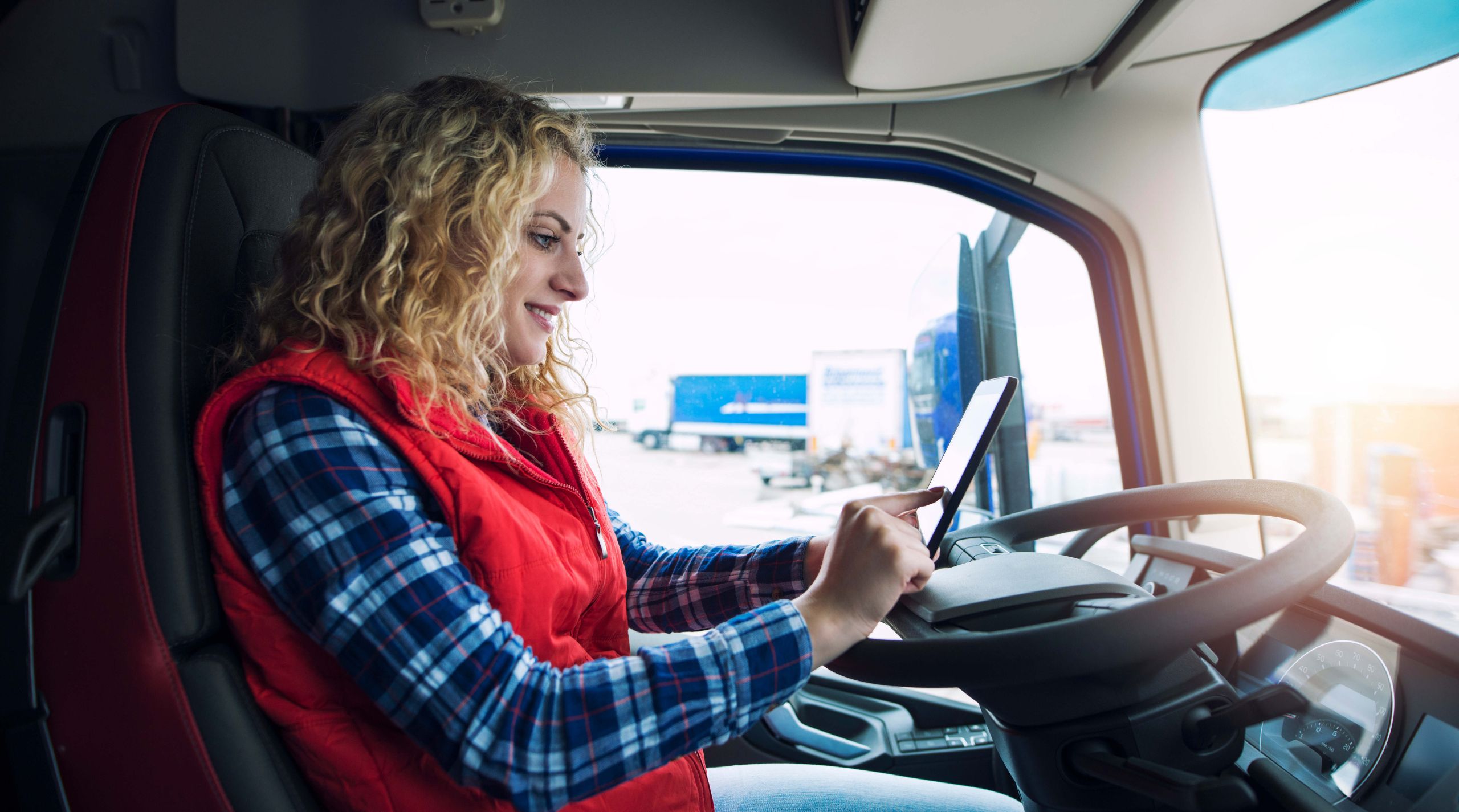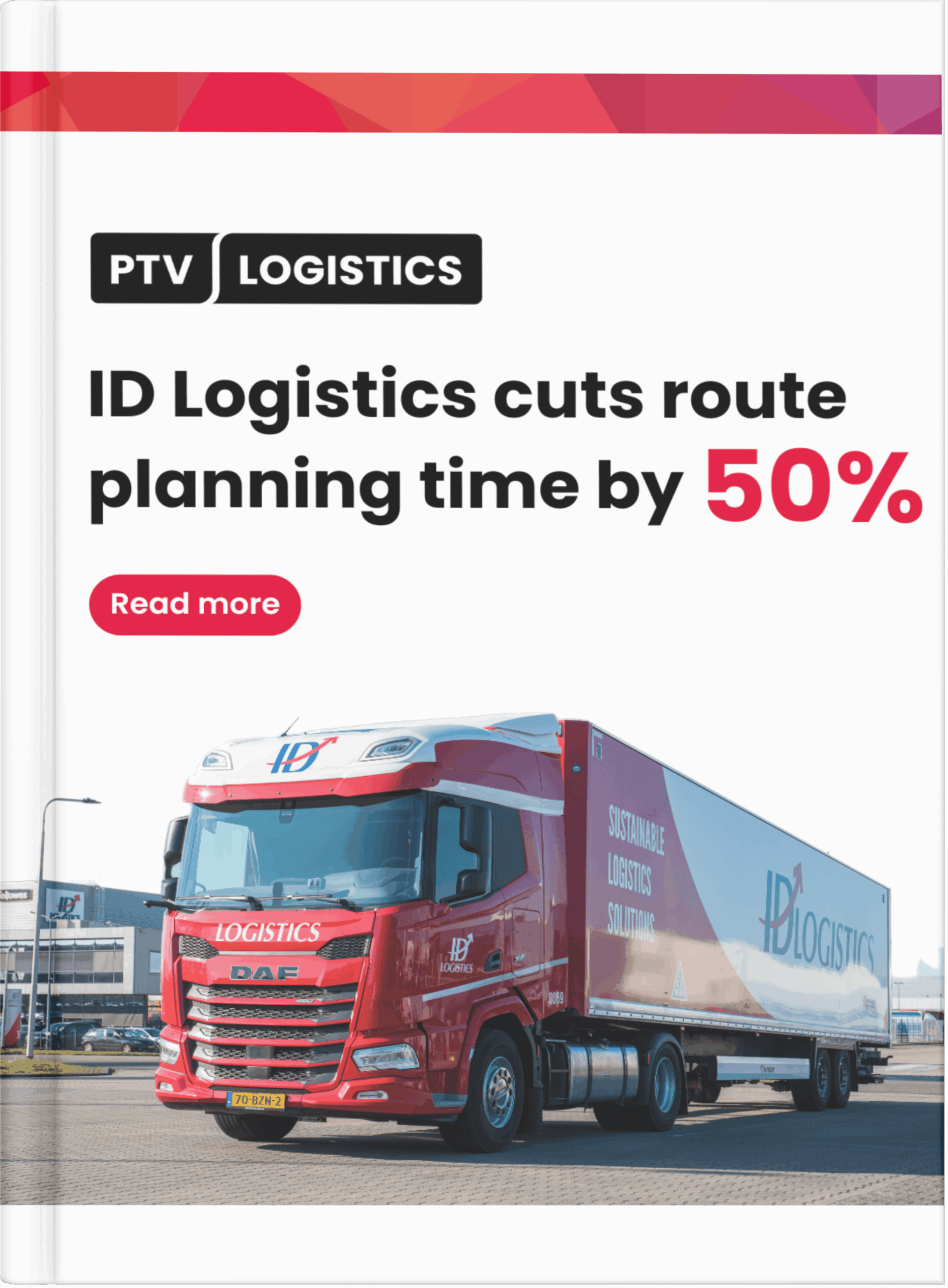Last mile costs make up a huge proportion of the overall cost of delivery operations. In some cases, up to 53%. So it’s understandable that companies want to find savings wherever they can. Because of the complex nature of last mile delivery, one of the quickest ways to reduce costs is to increase efficiency.
A last mile delivery app supports planning and helps consolidate delivery operations in one place – from route optimization to navigation to centralized documentation – enabling everyone to work more efficiently. Small time savings add up to big cost savings.
But, with so many options available, how do you know which one to choose? Here, we’re going to outline the key features to consider when choosing a last mile delivery app and show you the benefits and potential ROI you should see.
Discover how ID Logistics cuts route planning time by 50%
A real-life story of the transformation of route planning at one of Europe’s largest logistics companies.
Key features to look for in a last mile delivery app
For the most impact, your last mile delivery app should help everyone, from transport planners to drivers, do their jobs more efficiently. As a result, look for these features:
- Dynamic route planning and optimization. Most routes will be planned and optimized before trucks depart. However, disruptions and delays can happen on the route that means the original plan goes out the window. A good last mile delivery app should not only support initial route design but also allow planners to make updates on the go and push them directly to drivers with little disruption.
- Bulk route assignment. For large fleets, planners need to quickly share each route to the assigned driver. Good software will enable them to automate this process instead of manually uploading each route. It’s also not uncommon for changes to happen that mean routes need to be reassigned: last minute orders, failed deliveries, customer returns etc. Again, automating this process saves time.
- Navigation with GPS tracking. The quickest way for drivers to complete their routes is if they don’t have to think about how they’re going to each destination. Accessing updated maps and real-time traffic information through a mobile app ensures they’re always on the quickest, and most appropriate route for their vehicle size. And if they need to refuel, it can identify the most convenient stop with the least impact on timings.
- Real-time communication. This should be available for internal stakeholders, so that drivers and dispatch can quickly communicate changes to routes or unexpected disruptions. It should also be available for customers. Good last mile delivery apps will share real-time updates and accurate ETAs so that they can track the progress of their delivery.
- Electronic proof of delivery (ePOD). Rather than asking drivers to manage physical paperwork, which can easily be lost and is prone to errors, a mobile app with integrated ePOD ensures all the correct documentation is collected and centralized. This not only speeds up the delivery process, but also any potential customer claims as information is immediately accessible.
- Integration capabilities. A last mile tool is only efficient if it connects with your other management systems. They must be able to talk to each other if processes can be automated and made quicker.
- Performance analytics. To make the greatest savings, you need to identify problem areas. And for that, you need data. Many last mile apps help you to collect and analyze delivery data so that you can optimize operations in future.
- Offline data storage. Drivers aren’t always going to have phone signal or internet connection, particularly in rural areas, but this shouldn’t prevent them doing their job. As a result, you should look for software that enables maps, documentation and other features a driver might need to be available offline.
- Ease of use. You don’t want your driver to be distracted while they’re behind the wheel, so a mobile app needs to be easy to use. Some features to look out for include the ability to refresh the route on screen with just a tap, or voice-to-text that enables quick, hands-free communication.
Did you know?
PTV Navigator helps drivers stay on the fastest, safest route, even offline, hence making it a smart companion for last mile delivery operations.
What are the benefits of last mile delivery apps?
As we’ve highlighted, a good last mile delivery app can increase efficiency which results in cost savings, operational improvements, a better customer experience and a safer and more secure delivery process.
From an operational perspective, it can:
- Support better planning and quicker dispatch of deliveries.
- Help centralize documentation making it easier to chase payments or resolve claims.
- Increase capacity by enabling drivers to make more deliveries in the same amount of time.
- Scale quickly to support bigger fleets and more complex routes.
- Meet sustainability goals by reducing carbon emissions.
From a cost-saving perspective, a last mile delivery app can:
- Support route optimization to reduce fuel costs and minimize vehicle wear and tear.
- Minimize disruptions by enabling quick and automated rerouting.
- Reduce the number of failed deliveries by improving communication with customers.
- Lower the number of overtime hours or drivers by reducing delays overall.
- Reduce admin costs by automating processes including documentation collection.

They increase security and safety:
- GPS shows where any vehicle is at any given time, preventing theft or alerting to dangerous routes.
- Performance analytics can help identify driver fatigue and support better planning for driver welfare.
- ePOD provides evidence of delivery that can be used in any customer claims.
Last mile apps also improve the customer experience by:
- Enabling more on-time deliveries.
- Improving communications so customers can plan around delays.
- Making post-delivery processes, such as returns or complaints, easier

Achieve an ROI of up to 20%
Whilst integrating a last mile delivery app into your current transport management system requires an initial investment, the return on that investment can be high. Software that includes dynamic route optimization, can save you up to 20% on your overall delivery costs.
In addition, the efficiencies it brings and the customer service improvements it offers can contribute to increased revenue over time. Greater efficiency means you can do more with less, and a better customer experience will encourage long-term loyalty, leading to increased sales.
It also supports employee satisfaction which, at a time of severe driver shortages, is crucial in keeping staff morale high and recruitment costs low.
To explore how PTV Logistics’ last mile delivery solutions can streamline your operations and cut costs, reach out to our team today.
LAST MILE DELIVERY INSIDER
Mastering last-mile delivery isn’t easy. That’s why we’ve compiled expert strategies and practical insights to help you reduce costs and improve efficiency. Learn how to optimize your last-mile operations and put these tactics to work.


